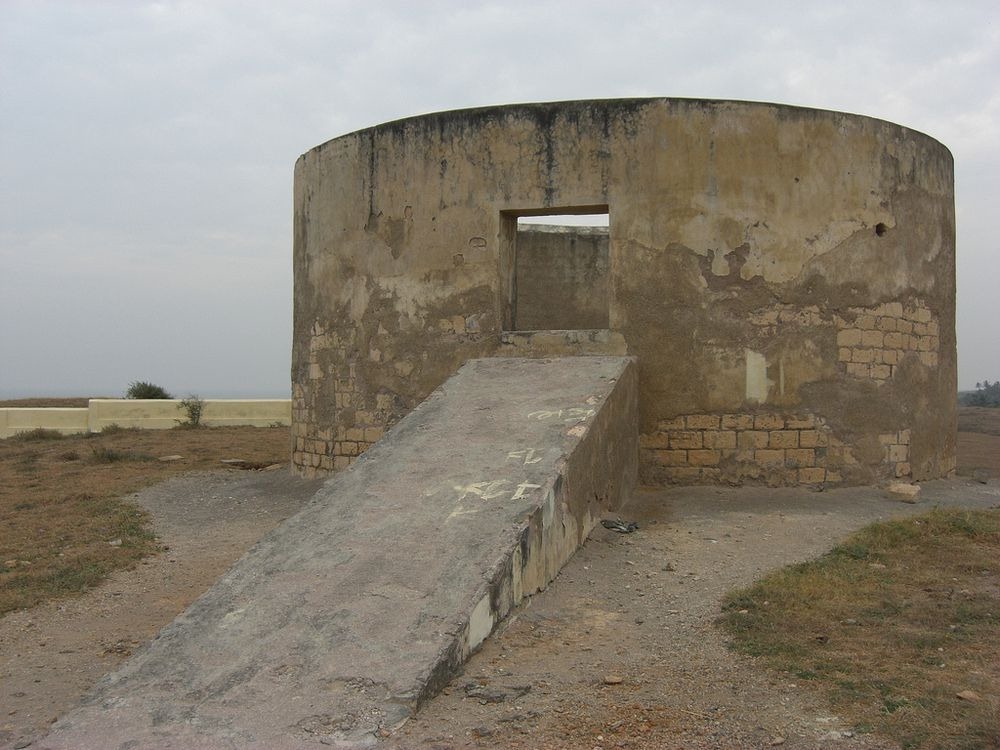The Zoroastrians have an unusual way of disposing off their dead. They neither bury them nor cremate them. Instead, corpses are left atop high towers known as dakhma, or Towers of Silence, where they are exposed to the elements and consumed by scavenger birds such as vultures, kites and crows. This macabre funeral practice arises from the belief that the dead are impure, not just physically because of decomposition, but because they are contaminated by the ‘corpse demon’ and evil spirits who rush into the body as soon as the soul leaves. Burial and cremation are thus seen as polluting nature and fire, both of which the Zoroastrians thrive to protect. This reverence towards all things natural has led some scholars to proclaim Zoroastrianism as the "world's first ecological religion."
A defunct Tower of Silence in Yazd, Iran. Photo credit: Photoroamings/Flickr
The Zoroastrian practice of exposure of the dead, known as dokhmenashini, was first documented in the mid-5th century BCE by Herodotus, but the use of towers came much later in the early 9th century.
Towers of Silence have a flat roof divided into three concentric rings where the naked bodies are laid out —the outer ring is for men, the central one for females and the innermost for children. Once the scavenging birds had pecked away the flesh and the exposed bones have been bleached by the sun and wind, they are collected in an ossuary pit at the center of the tower, where lime is added to allow the bones to gradually disintegrate. The entire process takes nearly a year. At the periphery of the dakhma, jutting out from the structure, are four channels through which the remaining material is flushed off by rainwater but only after they have run through multiple coal and sand filters.
The ancient practice survived among orthodox Zoroastrians in Iran until dakhmas were declared a health hazard and made illegal in the 1970s. It is still practiced in India by the Parsi people, who constitute the largest Zoroastrian population in the world. Rapid urbanization, however, have put pressure on the Parsis, and this strange ritual and the right to use Towers of Silence is a much debated issue even among the Parsi community. But the biggest threat to dokhmenashini hasn’t come from health officials or from public protest but from the lack of vultures.
A Tower of Silence, in Doongerwadi, Mumbai, visible from nearby high-rises. Photo credit: Dinodia Photos/Alamy
Vultures, who play an important role in the disintegration of the corpses, have been steadily declining in the Indian subcontinent since the 1990s. In 2008, their numbers fell by a staggering 99 percent that confounded scientists, until it was discovered that a drug administered to cattle is fatal to vultures when they feed on the carcasses. The drug was banned by the Indian government but the vulture population is yet to recover.
With no vultures left, some Towers of Silence in India have installed powerful solar concentrators to dehydrate the body faster. But the solar concentrators have the unintended side effect of keeping away other scavenging birds such as crows during the day because of the heat. They also do not work during cloudy days. So a job that would take only hours for a flock of vultures to complete now take weeks, and these slowly decomposing bodies make neighbors squeamish. Some Towers of Silence, that were originally situated on the outskirts of cities, now lie squat in the middle population centers and had to be closed because of the smell.
Some Parsis have now started preferring cremation.
Printed drawing of 'Towers of Silence'. Photo credit: Wellcome Images/Wikimedia
One of the two Towers of Silence, Yazd, Iran. Photo credit: Fulvio Spada/Flickr

A Tower of Silence in India. Photo credit: poida.smith/Flickr
The pit of a Tower of Silence, Bombay. Photo credit: GSV/Flickr
The two Towers of Silence, in Yazd, Iran. Men on the left, women on the right. Photo credit: Julia Maudlin/Flickr

Photo credit: en.academic.ru


















Strange facts! Didn't know this! Wow!
ReplyDeleteWhat an incredible smell you've discovered (Han Solo)
ReplyDelete